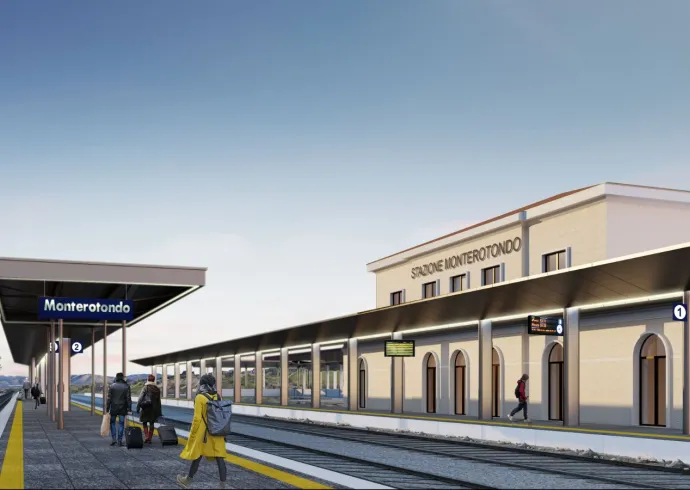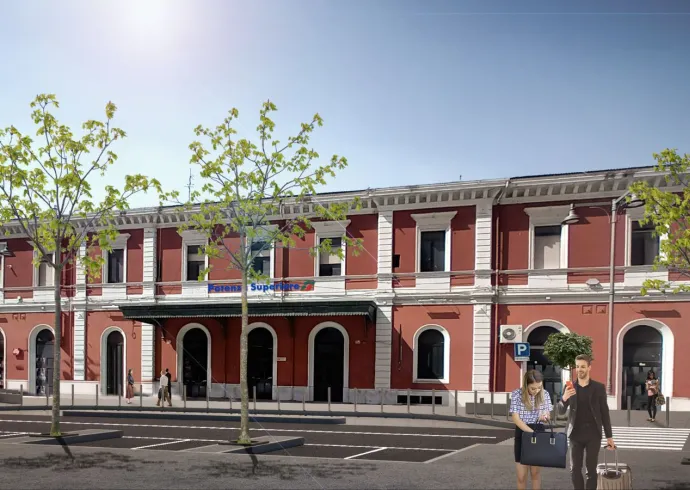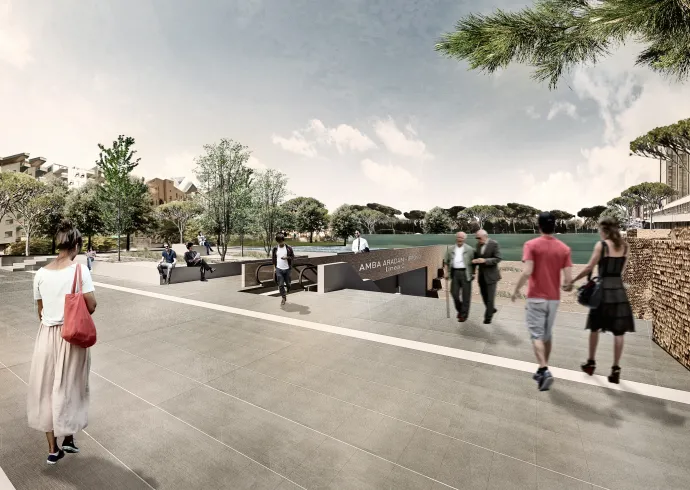Projects menu
Expertise menu
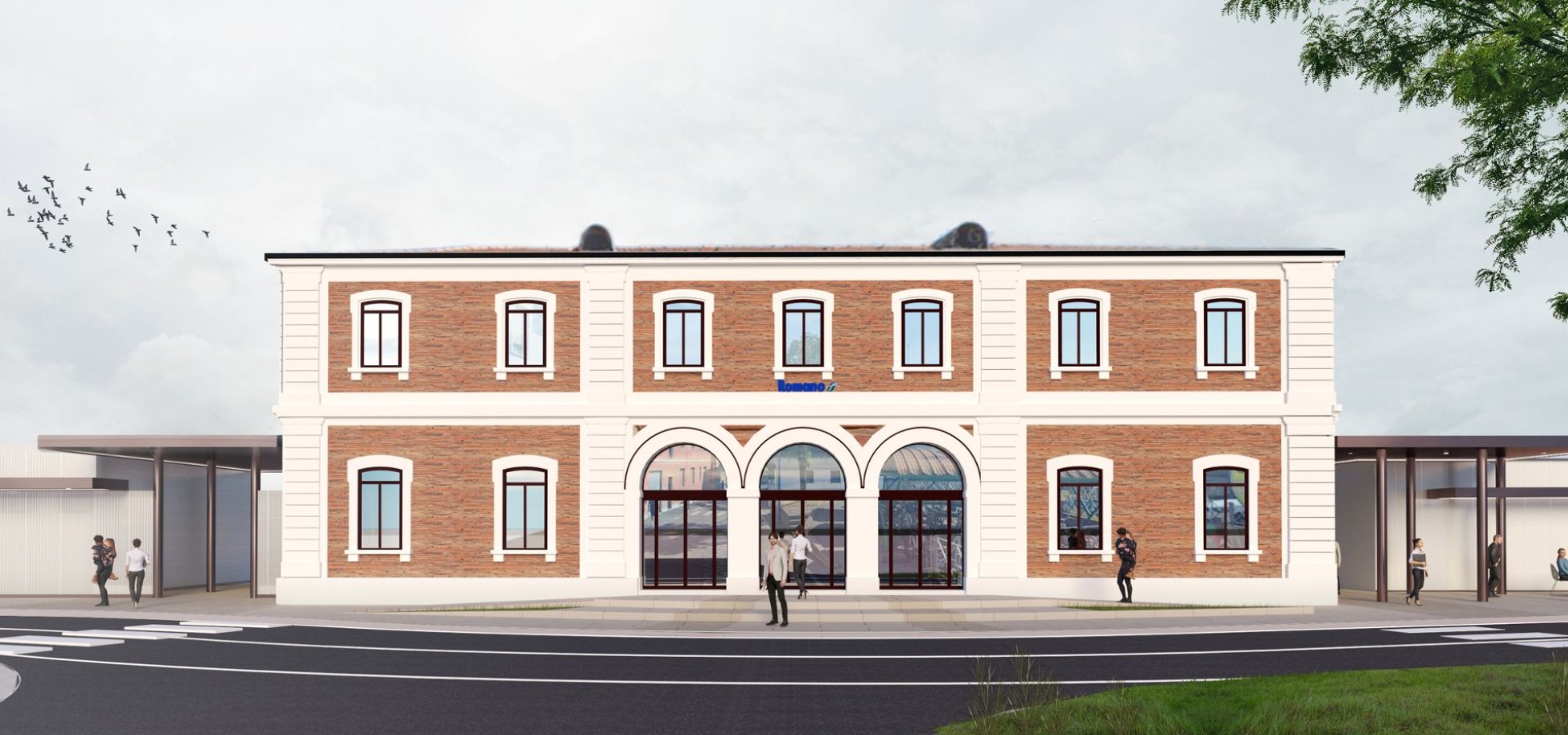

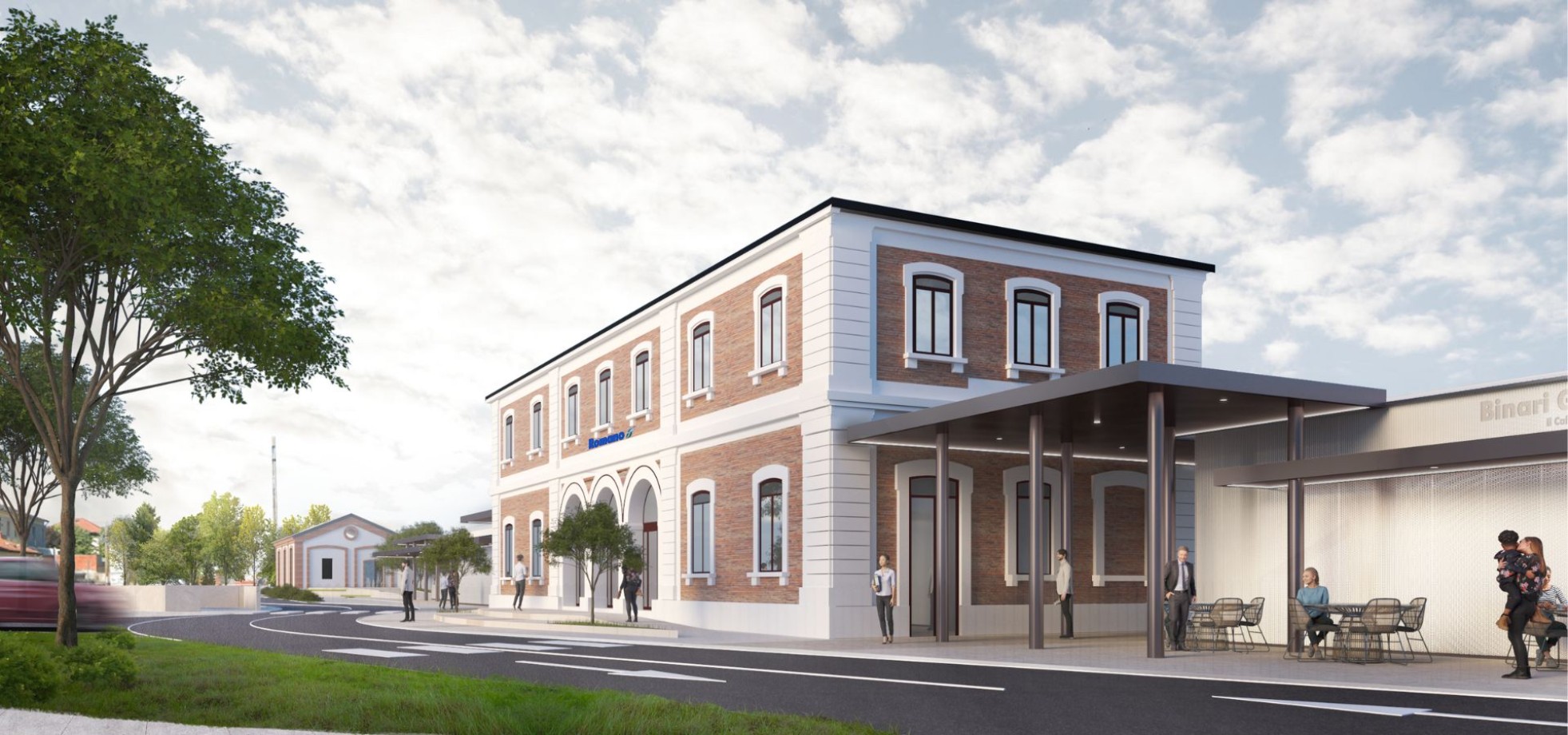
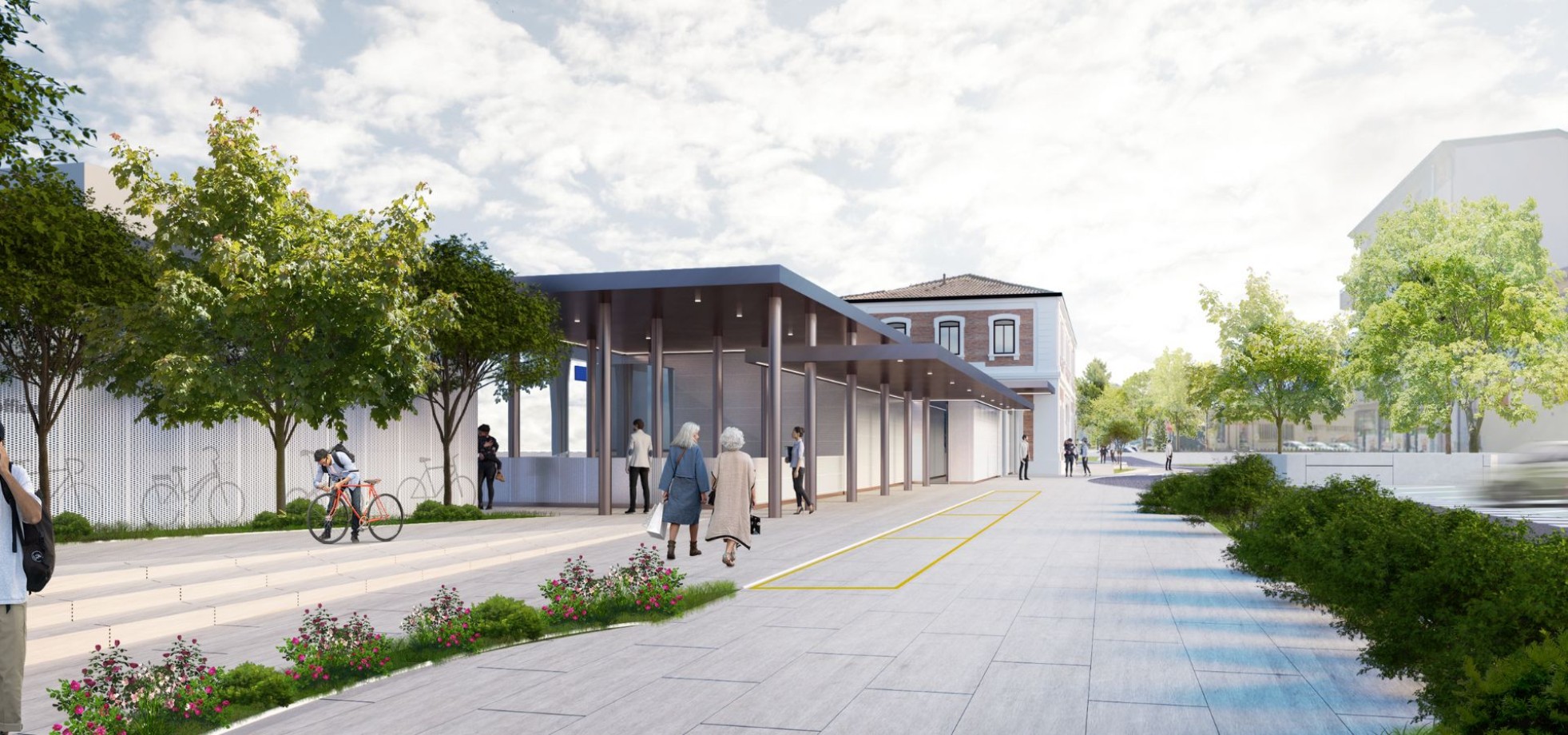
Romano di Lombardia Station
The Romano station is a medium-sized railway hub along the Milan-Venice line, inaugurated in 1878. The station area is located along strategic streets of the urban fabric and serves commuters, students, and residents. The context calls for urban redevelopment and better organization of pedestrian and vehicular mobility flows, including intermodality with buses and bicycles.
The redevelopment project for the Romano di Lombardia station aims to transform this railway hub into a modern, accessible, and functional place while remaining deeply rooted in its history and surrounding urban fabric. The entire project aspires to combine operational efficiency with respect for the existing architecture, reinterpreting spaces with solutions that prioritize both functionality and aesthetics.
The external areas will be redesigned to offer an orderly and safe space, with well-defined pedestrian paths and adequate parking to facilitate intermodality between trains, buses, and bicycles. In this new arrangement, the current parking chaos will give way to a well-organized layout, while the addition of canopies, green areas, and dedicated rest zones will enhance the station's role as a gathering point.
The Passenger Building, the heart of the entire complex, will undergo a regeneration of its internal spaces, where waiting rooms and restrooms will be modernized to provide greater comfort and functionality for passengers. The upper floor will be converted into community spaces, an intervention that meets not only the need for functional structures but also the desire to create a station capable of hosting the local community. Externally, the conservative restoration will respect the guidelines of the Cultural Heritage Authority, enhancing the original architecture with new finishes and fixtures that meet both aesthetic standards and energy regulations.
The Bike Park, a symbol of the increasing integration between cycling mobility and rail transport, will undergo a radical redevelopment. The addition of bright glass panels and a waterproofing system will resolve issues of infiltration and wear, transforming it into a welcoming and protected space for cyclists. The inclusion of a bike repair shop, along with expanded bike parking spaces, will make it a key reference point for citizens who choose cycling for their commutes.
Accessibility is a key component of this project, which includes the installation of tactile paths for visually impaired individuals and elevators to facilitate access to the platforms. These interventions, in addition to improving the passenger experience, emphasize the principle of inclusivity, making the station a truly accessible and open space for everyone.
In parallel, the project adopts sustainability criteria, adhering to the Minimum Environmental Criteria (CAM). Photovoltaic panels integrated into the canopies not only reduce the energy footprint but also reflect a conscious choice for renewable energy and responsible resource management.
The redevelopment of the Romano di Lombardia station thus becomes a dialogue between past and future, balancing the need to preserve architectural heritage with the ambition to make the spaces welcoming, functional, and sustainable. This project transforms the station into a place that is no longer just for transit but a true connection point for citizens, mobility, and the territory.
Other projects
